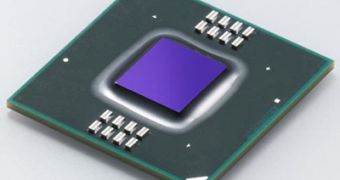Japanese manufacturer Toshiba has begun sampling units of its SpursEngine chip, a high-performance co-processor inspired from IBM's Cell processor, that powers Sony's PlayStation 3 games console. The new chip is designed to take care of intensive applications for graphics design and image manipulation.
The SpursEngine comes to complement the main processor, and not to replace it. It is extremely suitable for handling high workloads, as it is built of four processor cores and an integrated hardware codec for encoding and decoding high-definition MPEG2 and H.264 video streams. According to the company, the co-processor is able to reach core frequencies of 1.5 GHz at a power consumption of between 10 and 20 watts.
The new chip unlocks new possibilities in delivering life-like animations and images. Its capabilities have already been demonstrated on a laptop computer that received a video feed from a regular camera. Each time a human user would show up in front of the camera, the SpursEngine would simulate a new hairstyle or make-up without any processing delays or chokes.
More than that, the demo took place tri-dimensionally, and the software managed to adjust the hairstyle as the person flipped or tilted their head. Real-time graphics processing is difficult to achieve even when using a fully-fledged, high performance graphics processor, not to mention a low-voltage notebook chip.
Toshiba plans to sell more than 6 million SpursEngine units during the first three years. Although the sampling processors come with a price tag of about $98, the manufacturer hopes to trim down costs until $50 for 1,000-tray units.
The SpursEngine chips could power the upcoming generations of graphics cards, and Toshiba has already inked partnerships with Corel, CyberLink and Leadtek regarding the development of hardware and software for its chips.

 14 DAY TRIAL //
14 DAY TRIAL //